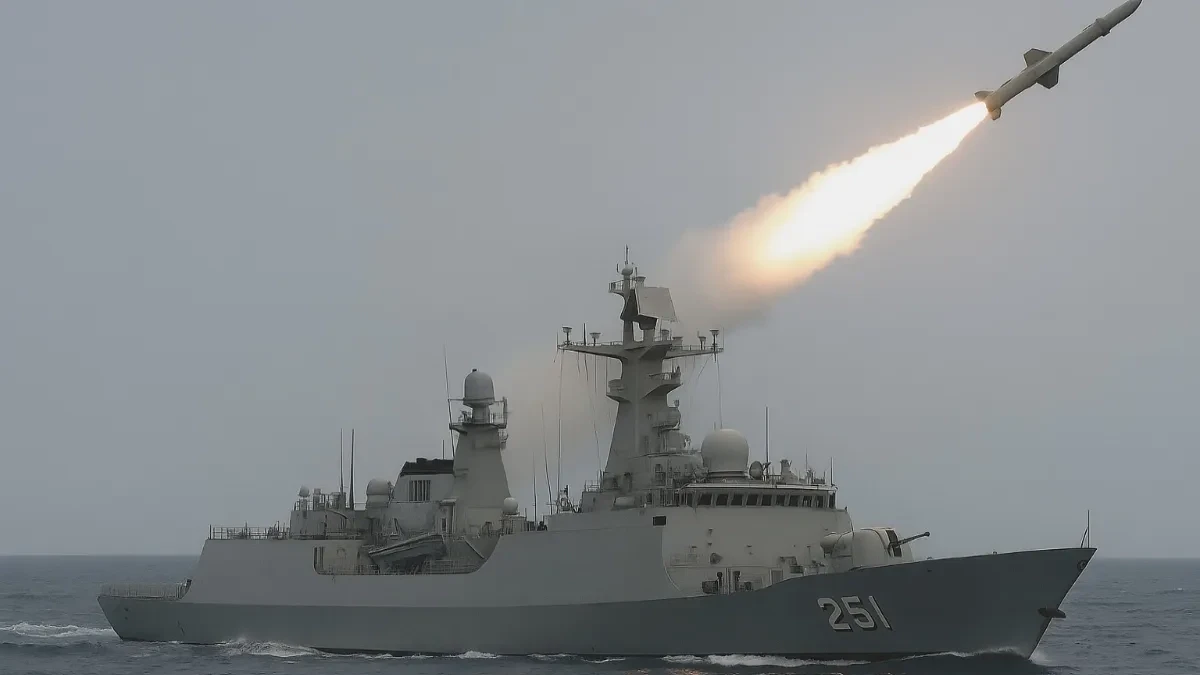Despite major investments in modern warships and Chinese missile technology, the Pakistan Navy’s air defence remains weak. Persistent failures in FM-90N and LY-80N missile systems, coupled with critical radar integration issues, have left Pakistan’s fleet exposed and unable to counter aerial threats, exposing gaps in its ability to defend the country’s maritime interests in a high-threat environment.
The Pakistan Navy’s reliance on Chinese-supplied missile systems-specifically the FM-90N and LY-80N-has resulted in significant operational vulnerabilities. Chronic failures in these missile systems, compounded by persistent radar-targeting integration issues, have left Pakistan’s frontline warships unable to provide credible air defence or sea control.
FM-90N Missile System Failures
The FM-90N surface-to-air missile system, installed on Pakistan’s Zulfiquar-class (F-22P) frigates, has repeatedly malfunctioned due to flawed imaging technology, with onboard imaging devices unable to lock onto targets and rendering the missiles ineffective in real combat scenarios. These failures have forced the Pakistan Navy to operate its frigates with severely reduced air defence capabilities, leaving them vulnerable to enemy aircraft and anti-ship missiles. Attempts to rectify these defects have been hampered by poor after-sales support and slow maintenance from Chinese manufacturers, resulting in prolonged periods of reduced operational readiness.
LY-80N Missile System and Radar Integration Problems
The newer Tughril-class (Type-054A/P) frigates of the Pakistan Navy are equipped with the LY-80N medium-range air defence missile system, but despite its advanced specifications, the system has faced significant integration and reliability issues. The main radars on these ships, including the SR2410C AESA and Type 517, have exhibited inconsistent tracking performance, particularly against modern missile threats. These defective radars have prevented the effective launch of both surface-to-air and surface-to-surface missiles, thereby undermining the ships’ air defence and anti-surface warfare capabilities.
Both the Zulfiquar and Tughril classes have also suffered from defective infrared sensors, further degrading their ability to detect and engage incoming threats. The LY-80N system’s dependence on semi-active radar homing requires seamless integration with fire control radars. Still, in practice, electromagnetic compatibility and interference issues have limited the number of targets that can be engaged simultaneously, making the system highly vulnerable to saturation attacks.
This, in turn, results in serious consequences for Pakistan’s naval security, giving rise to reduced combat readiness. Technical failures have left only a fraction of Pakistan’s surface fleet fully operational during critical periods, as seen during recent naval operations.
The Pakistan Navy’s dependence on Chinese missile systems such as the FM-90N and LY-80N has resulted in a critical inability to reliably intercept incoming missiles or aircraft, exposing its fleet to significant operational risk and undermining both maritime deterrence and power projection.
With the maximum of Pakistan’s defence imports coming from China, persistent quality and integration issues have raised serious concerns about the long-term viability of this strategy. These technical shortcomings have left the Navy’s most advanced warships unable to defend themselves effectively, casting doubt on Pakistan’s ability to secure its maritime interests in a high-threat environment.
Aritra Banerjee is a Defence, Foreign Affairs & Aerospace Journalist, Co-Author of the book ‘The Indian Navy @75: Reminiscing the Voyage’ and was the Co-Founder of Mission Victory India (MVI), a new-age military reforms think-tank. He has worked in TV, Print and Digital media, and has been a columnist writing on strategic affairs for national and international publications. His reporting career has seen him covering major Security and Aviation events in Europe and travelling across Kashmir conflict zones.
